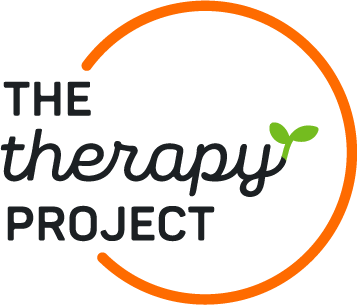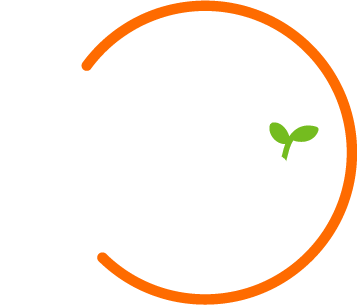In this article, we’re going to talk about the role of Acceptance in developing and maintaining good mental health.
If you’ve been reading the articles on this blog, you’ve probably noticed that Acceptance is a concept that comes up repeatedly.
This is because, in recent years, its role in treating psychological issues and fostering better mental health has become increasingly recognized.
So, let’s take a closer look at what Acceptance is all about.
What is Acceptance?
Imagine it’s Saturday morning. You’ve planned a picnic with friends, but when you look out the window, you see that it’s raining, and it doesn’t look like it will stop anytime soon.
The reality is that it’s going to rain all day. If this completely ruins your mood and you keep thinking, “Damn it, I had picnic plans today, and now because of this rain, I can’t go. Life sucks,” you’re not accepting.
However, if when you see the rain, you feel disappointed, sad, or even frustrated but tell yourself, “Well, I would have liked to have a picnic, but there’s nothing I can do. It’s raining,” then you are accepting.
For a more formal definition, we can use Russ Harris’s—one of the leading figures in Acceptance and Commitment Therapy (ACT)—from his book ACT Made Simple:
- “Opening up to our internal experiences (thoughts, images, memories, feelings, emotions, urges, bodily sensations) by allowing them to be just as they are, regardless of whether they are pleasant or painful. We open up to our experiences and give them space, stop struggling with them, and let them come and go freely at their own pace.”
If you read the article on how avoidance fuels psychological distress, you may have realized that acceptance is almost the opposite of avoidance.
So, what we’re really talking about is Acceptance of experience.
On a practical level, this means fully engaging with our internal experiences—whether desirable or not—openly and without judgment.
What Acceptance is NOT
Acceptance does not mean passively accepting your life situation, giving up on everything, or doing nothing to improve your life or align it with your values.
The Three Components of Acceptance
To give the concept more depth, let’s go back to Russ Harris, who suggests thinking of Acceptance as comprising three overlapping phases.
Recognizing
Recognizing the existence of an experience, whether pleasant or unpleasant. This means noticing it with curiosity, naming it, and observing it without judgment.
Some examples would be: “I’m feeling afraid,” “My hands are sweating,” “I feel ashamed,” “I’m impatient,” etc.
Allowing
Once we’ve recognized what we’re experiencing, the next step is to allow it to be there, letting it be—”live and let live,” but for internal experiences.
It might sound like: “I don’t like feeling this way, but I’m going to let it be,” “I’d rather not feel anxious, but okay, I’ll let it accompany me,” “That thought is unpleasant, but I don’t have to do anything about it.”
Accommodating
The final and most difficult phase is accommodating the experience. This means giving it the space it needs, integrating it, and allowing it to stay as long as it needs to.
Why is Acceptance Important (or Necessary) for a Good Life?
One of the most obvious answers to this question is that in life, we all experience suffering. We go through grief, feel fear, stress, disappointment; stepping out of our comfort zone makes us anxious, etc. Being able to be “okay” with this reality is essential.
If our response to discomfort is to avoid or deny it, we significantly diminish our quality of life.
Not only does this increase the risk of developing or worsening issues like depression, phobias, panic disorder, chronic stress, and generalized anxiety—conditions that thrive on our inability to recognize, accept, and regulate our emotions—but it also makes it much harder to face situations outside our comfort zone, even those that could lead to a more fulfilling life.
Of course, no one actively decides to make their life harder. These avoidance or non-acceptance tendencies are response patterns we develop over time, usually because we never had the chance to learn more effective strategies for handling discomfort.
Additionally, our brain is an expert problem solver and will try to “fix” anything it can. So when we experience something unpleasant, our automatic reaction is to “do something” to reduce, eliminate, or avoid it. Unfortunately, when it comes to emotions, sensations, and thoughts, these strategies not only fail but often intensify and prolong our distress.
How Can We Improve Our Acceptance?
There are several ways to practice and enhance our Acceptance of experience.
Practice Mindfulness Techniques
Mindfulness is a highly effective tool for becoming more aware of our internal states—in other words, Recognizing what we’re experiencing.
This awareness is based on non-judgmental observation of “what is” in our present experience. Being able to observe without judging or trying to control an experience is one of the key features of acceptance.
If you search online, you’ll likely find hundreds of techniques to improve your mindfulness skills. One of the simplest is the following:
- Sit or lie down in a comfortable but alert position. With your eyes open or softly focused, direct your attention to your breathing, noticing the physical sensations of air entering and leaving your body.
- Your attention will repeatedly get caught up in thoughts, memories, images, sensations, or other experiences. As soon as you notice this, acknowledge it and gently return your focus to your breathing without self-judgment.
- You can do this for as long as you’d like. Typically, sessions of 10-20 minutes, twice a day, are a good target.
Exercises like this help you become increasingly aware of your moment-to-moment experience.
Reconcile with Your Emotions
Acceptance means acknowledging and making space for all our emotional states, even those we dislike or that our environment criticizes. This doesn’t mean losing all inhibitions and, for example, hitting people just because you “accept that you’re angry.”
Rather, it means listening to yourself and learning to recognize what you’re feeling without trying to avoid, control, or suppress it. This allows you to take responsibility for your emotions and let them inform you about what you need at any given moment.
When we are in touch with our sadness, anger, shame, and fear, these emotions not only stop controlling us and leading to impulsive or unconscious actions, but they also help us reflect, understand ourselves better, and act in ways that ultimately make our lives more fulfilling.
Allow Yourself to Feel
A valuable and powerful exercise is gradually exposing yourself to situations that generate feelings you usually avoid and allowing yourself to experience them in the moment.
If you let yourself feel fear, nervousness, or rejection instead of avoiding them, you will gradually expand and enrich your life experiences.
For example, if you avoid starting conversations because nervousness makes you uncomfortable, you will never develop that skill. But if you allow yourself to feel nervous, you can start those conversations anyway. Over time, it will likely become easier, and your nervousness will decrease.
Conclusion
Acceptance is a key tool for preventing and reducing psychological distress and for living a more fulfilling, satisfying life aligned with your values.
Although it may feel counterintuitive, given our natural tendency to suppress or avoid difficult emotions, in the long run, it’s the best strategy to prevent those experiences from becoming chronic or causing unnecessary suffering.
If you want to take your personal growth to the next level, don’t hesitate to try therapy and contact us. More and more people are going to therapy and discovering its incredible impact on their lives.








